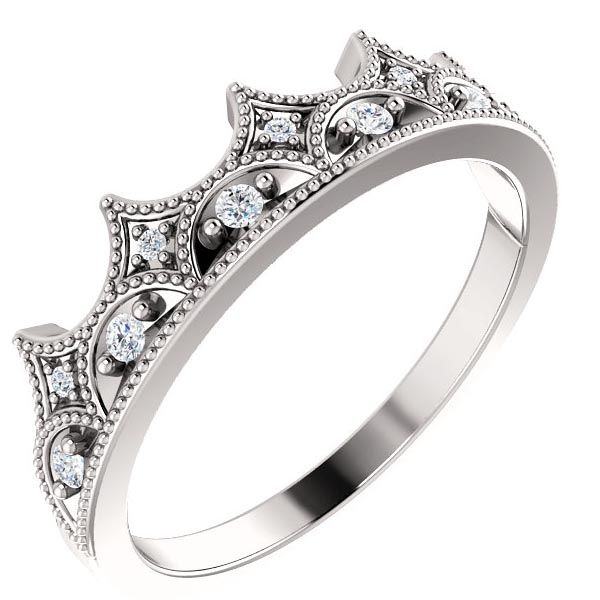
You might call me a Stuller groupie. After five visits to the mammoth jewelry supplier headquartered in Lafayette, La., the heart of Acadiana, I’ve developed a soft spot for Cajun culture and the friendly, hospitable people who embody it. When my colleagues at JCK, Mark Smelzer and Randi Gewertz, asked me to join them at the company’s annual Bridge conference last week, I didn’t hesitate. Not only is Stuller home to some of the country’s smartest, savviest jewelry professionals, but also the conference they put together always leaves me feeling inspired. I attended as many seminars as I could and came away with tons of ideas, the best of which will surely make it into the pages of JCK in 2018. Here’s a sampling of what I learned:
1. When you’re contemplating your store’s ambiance and decor, it’s helpful to ask yourself: “If my store was a dinner party (or a car), what would it look and feel like?” Is the decor rustic or sleek? Is the car vintage or modern? Design cues will appear in your answers.
2. Each page of your website needs to have one piece of intent. For example, if you have watch repair services, you should have a page on watch repairs. Do you offer engraving services? Create an engraving page.
3. Search engines are penalizing websites that are not mobile-friendly. Be sure your site is optimized for mobile devices—your Google rankings will improve as a result.
4. Google registers 100 billion searches per month. Twenty percent are location-based, and 50 percent are on smartphones.
5. Given how critical it is to land somewhere near the top of Google results (in roughly the first seven rankings), you need to verify your website in a Google business listing (via phone or through postcard). If you do nothing else, you should do this.
6. Instagram’s 600 million monthly active users represent just a fraction of Facebook’s 1.7 billion monthly active users, but the photo-sharing app is the fastest growing social media platform and is used by 59 percent of 18- to 29-year-olds.
7. Soliciting reviews on Google, Yelp, and other customer review platforms is against these sites’ terms of service, but you should do it—carefully. For example, in follow-up emails to your customers, ask them to review your store on these sites but don’t link to them; make clients search you out so no red flags go up if a slew of reviews is tracked back to your email campaign.
8. Lunchtime is the ideal time to post content and send emails.
9. In the U.S., jewelry is sold at 91,000 locations in total, including online outlets. At 23,462, the number of jewelry stores is about 25 percent of the total figure, yet they account for 40 percent of total revenue.
10. From 1996 to 2016, total jewelry sales in the U.S. grew from $32 billion to $85 billion. The growth was marred by a decline of $7 billion over a 2-year period at the height of the recession.
11. Bridal jewelry is a $10 billion industry and represents from one-third to one-half of a typical jeweler’s business.
12. Six out of 10 bridal customers buy existing styles (down from 80 percent a decade ago), while about 25 percent are interested in some custom work.
13. About 15 percent of bridal jewelry customers buy online, citing better pricing and convenience as factors.
14. Among millennials, self-purchasing women account for 31 percent of nonbridal jewelry sales.
15. On a unit basis, the nonbridal jewelry category is now bigger than bridal.
16. The average millennial owns five pieces of diamond jewelry.
17. About a quarter of jewelry stores that have closed over the past two decades didn’t fail financially; they closed because they didn’t have an exit plan.
18. E-commerce represents 9 percent of total retail sales.
19. Seventeen percent of jewelry is manufactured in the U.S.
20. According to Morgan Stanley, lab-grown diamonds will command an 11 percent market share by 2020.
21. There’s a difference between lab-grown diamond screening and lab-grown diamond detection: You need advanced analytical equipment to identify lab-grown diamonds conclusively, but anybody can screen them by understanding diamond type classification.
22. Approximately 98 percent of natural diamonds are classified as Type I gems, while only 2 percent are Type IIs.
23. All colorless lab-grown diamonds are Type IIs (meaning they lack nitrogen), so if you can figure out if the diamond is a Type I, you can say with reasonable assurance that it’s natural.
24. On average, a $2 million store sees 9.8 percent of its monthly revenue driven by repairs, with the percentage peaking in January. (For a $1 million store, the repairs share grows to 16.2 percent.)
25. Read this: Uncommon Service: How to Win by Putting Customers at the Core of Your Business by Frances Frei and Anne Morriss.
26. Pirch is a retailer of consumer appliances that provides a “showroom experience” by allowing customers to test drive its products in store. Faucets spray water, the stove burners turn on, fridges are stocked with food. Now that’s cool!
27. Loyal customers are five times as likely to repurchase from you, five times more likely to forgive your mistakes, and seven times as likely to try a new offering—so driving loyalty is critical to driving your business.
28. There have been no major discoveries of diamonds in the world in the last 30 years, and none are anticipated. On the other hand, China has about 10,000 HPHT presses to create lab-grown diamonds and about 10 percent are focused on jewelry.
29. Stuller’s design team identified 25 trends at JCK Las Vegas; these six were the most prominent:
—Stacking, layering, delicate pieces
—Ear climbers
—V-shaped geometric styles
—Y-shaped necklaces
—Crown-inspired motifs
—Personalization
(Top: 14k white gold diamond crown ring; Stuller)
- Subscribe to the JCK News Daily
- Subscribe to the JCK Special Report
- Follow JCK on Instagram: @jckmagazine
- Follow JCK on X: @jckmagazine
- Follow JCK on Facebook: @jckmagazine